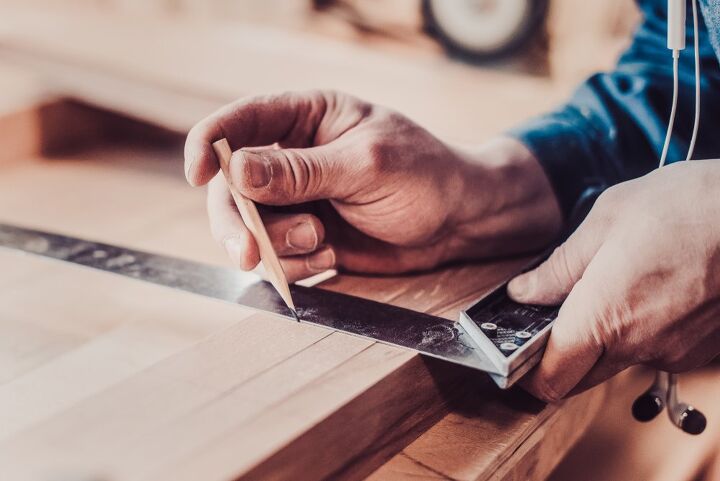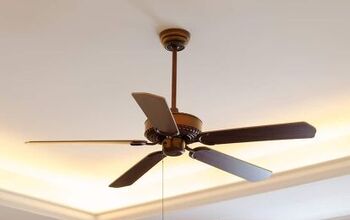Poplar Vs. Pine: Which Is Better For Woodworking?

Woodworking offers the chance to create some truly unique and useful pieces. One of the most important aspects of woodworking is choosing the right wood for the job. Each has its own unique properties, making it a more ideal fit for the job at hand.
Two of the more popular options are poplar and pine. Poplar is great for paper making and also crafting, though it has been used in packaging boxes and matchboxes as well. Pine is known for its strength and elasticity. You would find pine in furniture, furnishing, construction, and about a thousand other applications.
Do You Need to Hire a Framing Contractor?
Get free, zero-commitment quotes from pro contractors near you.

What is Poplar Wood Used For?
Most commonly, poplar is used to make paper. Since the paper market requires so much wood, poplar is great because it grows very fast. That means those production needs can be met in a timely fashion.
Poplar can also be sold as cheap plywood or hardwood timber for woodworking processes. Because its moisture content is reasonable, it has good flexibility. That means it can be folded into rigid structures, making it great for the bodies of things like drums, electric guitars, and other structures of a complex nature.
Finally, poplar has great workability and a uniform look. That makes it great for pocket watches, photo frames, and other decorative options.
What is Pine Used For?
Pine is optimal for indoor use. It is quite easy to stain and shape, making it a great option for window frames, flooring, paneling, furniture, and even roofing. There are different species of pine that can be used in planking as well.
Pine is typically not good for outdoor use. That is because it does not have decay- or insect-resistant properties. When it gets exposed to soil, it will rot due to the increased moisture levels. Pinewood can be pressure-treated for outdoor use, things like deck building in particular.
Check out these 54 woodworking ideas that sell well.
Poplar vs. Pine
Now that we have a better idea of what each wood type is and what it is used for, we can take a look at the different attributes that each has and how they compare to one another. Among them are workability, durability, and color/appearance.
Workability
Since it has a low density, popular is very easy to work with when using either machines or tooling. You do need a sharp cutter when performing your cuts, otherwise, you will wind up with fuzzy surfaces. That said, you don’t need prior drilling for things like nails and screws. It also finishes and glues well, too.
Pine is a bit heavier, a medium-weight wood. It is also quite soft. Pine has good workability whether by hand or using machines. Like poplar, it also screws, nails, glues, and finishes quite well, allowing for a superior finish.
Durability
Poplar has a major downside and that is its durability. Poplar can easily be damaged, scratched, and even dented. If you plan to use poplar, it is recommended for interior construction only. If you have to do outdoor construction, pressure-treated pine can be used. Just make sure that it has a chromate copper arsenate, copper azole, or some other kind of chemical preservative.
Pine tends to hold up much better than poplar in many cases. That said, it all comes down to what type of pine that you choose. Both are primarily meant for indoor applications, with the exception being pressure-treated pine.
Color/Appearance
Poplar generally looks white to a light cream, though it has some gray or brown streaks or sections across the grain. There is also yellow poplar, which is more light cream to a sort of yellow-brown. Sapwood poplar ranges from white to yellow.
Pinewood colors are typically pure white ranging to a reddish-brown coloring. Eastern White Pine, tends to be whiter while something like a Heartwood is a light brown hue. Pine color also tends to get a bit darker with age, so keep that in mind.
Hardness
The hardness of the wood is important because it will determine just how resistant it is to stand up to things wear, dent, and other damages. Hardness also predicts how difficult that wood will be when sanding, applying, screwing or nailing.
Poplar has a hardness ranging from 300 lbf (Balsam Poplar) to 540 lbf (Yellow Poplar). Pine has a hardness ranging from 380 lbf (Eastern White Pine) up to 870 lbf (Longleaf Pine). That makes pine the harder wood pretty much across the board.
Keep in mind that harder woods do not necessarily equate to better or stronger. Woods with a greater hardness may be more prone to things like cracking or even breaking depending on the conditions.
Poplar vs. Pine Applications
So, now that we know a lot more about poplar and pine, how do they stack up against one another in common applications? Remember that both can be used in a wide array of indoor applications, giving them both versatility. Let’s take a look at how they stack up against one another in terms of furniture, trim, and staining.
Furniture Construction
Pine is not only tough, but shock-resistant as well. That said, it might be a bit more susceptible to things like temperature change than poplar. If you plan to make pine furniture, make sure that it stays indoors or it is prone to warping.
Pine is typically used for more rustic furniture. You will find it in beach houses, farmhouses, and in mountain cabins. It also has a nice, rich color that ranges from yellow-gold to a red-brown or amber. That can depend on what stain you use, too.
Poplar dents but not quite as easily as pine does. It also blends a good mix of mobility, flexibility, and durability. Because it is much lighter, that means you will have a much easier time moving poplar furniture around your home.
Trim
Generally speaking, it is recommended that you go with poplar or even another type of wood rather than pine for trim. Poplar can be blotchy when you stain it, though. That said, it machines much more easily, particularly if you want that crisp finish.
Poplar can give you blurred edges if you do not have a sharp enough blade to perform the cut. Still, it does a much better job than pine when it comes to things like trim.
That said, some harder types of pine can make for fine trim. Just keep in mind that it is not only going to be much blockier but create a far more rustic aesthetic overall. If that’s what you want, pine is a fine choice for door trim and window casings.
Staining
Staining a project is a great way to achieve the color that you want. That said, it may be more difficult to achieve that color depending on what color wood you are working with. Not only that, but both poplar and pine tend to stain blotchy unless they are treated first.
Sealing is particularly important where pine is concerned. Depending on what type of pine you go with, it may be more prone to knotting. Knots can leak sap, which can create a sticky mess if they are not properly sealed.
It is important to properly seal whatever wood you are working with. Sealing helps to keep moisture out, which ultimately helps to preserve the wood for longer. That’s not to say that you shouldn’t take proper measures and precautions, but sealing at least helps for long-term preservation.
Cost
The costs can vary greatly between poplar and pine. Poplar is a bit easier to work with as it is both lighter and has fewer knots. Poplar also machines quite a bit better than pine, which is why it tends to be a little more expensive.
Pine is cheaper than most other types of wood, including something sturdier like an oak. That is because the knots can provide some contention when working with it. It is also a little more difficult to stain, treat, or finish as well. If you have a big project, it will be easier to stay in budget with pine as your choice.
Is Sourcing Important?
There is one other thing to consider when purchasing your wood, namely where you get it from. For instance, finding a rarer type of pine may be a bit more difficult. Heart pine and longleaf pine are a bit difficult to find because of over-harvesting. They aren’t available generally other than through second-hand sources.
Repurposing wood is a great way to find older styles of wood that are no longer available. Not to mention the potential savings to be had from recycling the wood. Take into consideration where you are purchasing the wood from, though. Getting it second-hand means there are no guarantees of the age or quality of the wood.
Do You Need to Hire a Framing Contractor?
Get free, zero-commitment quotes from pro contractors near you.

Which is Better: Poplar or Pine?
They both serve very different purposes and applications. That said, both are meant for indoor use and can be used for a wide array of functions. They are both workable with machines and by hand, making it a versatile, easy wood to work with.
Those who are more budget-conscious will likely go with pine. It is much cheaper than most other woods out there and it is easily found at just about any home improvement store. That said, it is a bit tougher to work with, particularly when it comes to staining. The knots present a unique challenge that has to be treated properly.
If you want something that will hold up a bit better, is more flexible, and easier to stain, then poplar is the choice. The only caveat is that poplar is a bit more expensive than pine, so it may not work with your budget.
Related Articles

Ryan Womeldorf has more than a decade of experience writing. He loves to blog about construction, plumbing, and other home topics. Ryan also loves hockey and a lifelong Buffalo sports fan.
More by Ryan Womeldorf












![The 10 Best Table Saws - [2022 Reviews & Buyer's Guide]](https://cdn-fastly.upgradedhome.com/media/2023/07/31/9070645/the-10-best-table-saws-2022-reviews-buyer-s-guide.jpg?size=350x220)














